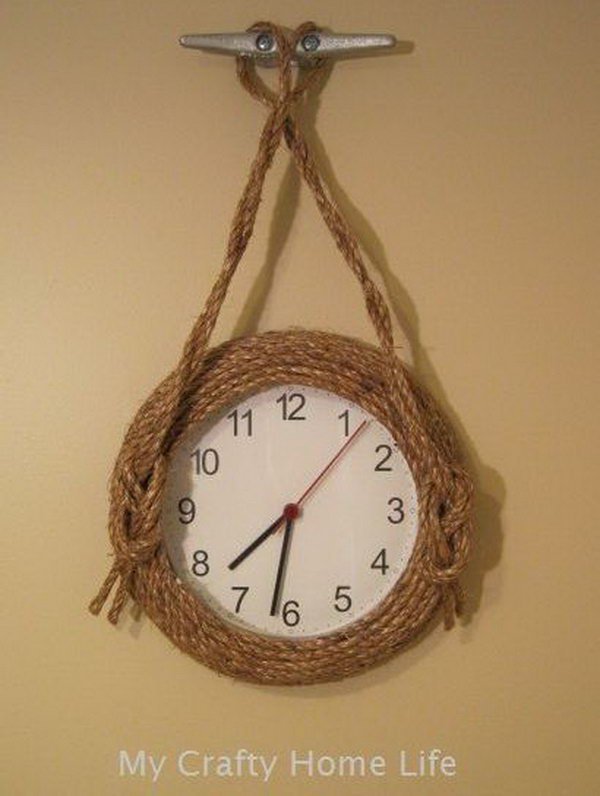
Crafting Nautical and Coastal-Themed Wooden Wall Clocks
Embark on a creative journey to craft exquisite wooden wall clocks that exude the charm of the nautical and coastal life. These timepieces, crafted with your own hands, will not only adorn your home but also serve as a cherished reminder of your love for the sea. This comprehensive guide will equip you with the necessary knowledge and techniques to embark on this rewarding endeavor.
Choosing the Right Wood
The choice of wood is crucial for both aesthetic appeal and durability. Opt for woods known for their strength, stability, and suitability for carving and finishing. Here are some excellent options:
- Mahogany: This classic wood offers a rich reddish-brown hue and natural beauty, enhancing the nautical theme.
- Walnut: With its deep brown color and intricate grain patterns, walnut provides a sophisticated and elegant touch.
- Oak: Known for its durability and robust character, oak is ideal for rustic coastal designs.
- Cherry: Its warm reddish-brown tones and smooth finish create a timeless and sophisticated look.
- Pine: This lightweight wood is easily workable and cost-effective, perfect for beginners.
Design Considerations
Before embarking on the construction, it's essential to conceptualize the design of your nautical or coastal wall clock. Consider the following aspects:
Theme and Style
- Nautical: Incorporate elements like ship wheels, anchors, ropes, seashells, or compass roses.
- Coastal: Explore beach-inspired designs featuring seashells, driftwood, lighthouses, or seagulls.
- Rustic: Emphasize natural wood textures and finishes, with a focus on weathered elements.
- Modern: Utilize clean lines, geometric shapes, and contemporary color palettes.
Clock Face Design
- Traditional Roman Numerals: These classic numerals add a touch of elegance and timelessness.
- Arabic Numerals: Modern and easy to read, Arabic numerals are a versatile choice.
- Custom Designs: Get creative with unique designs using stencils, stamps, or even woodburning.
Color Palette
- Blue and White: Evokes the serenity of the ocean and sky.
- Red, White, and Blue: Celebrates the colors of the American flag.
- Earthy Tones: Natural hues like browns, greens, and beiges complement coastal themes.
- Black and White: Creates a striking contrast for a modern or minimalist look.
Tools and Materials
To craft a beautiful wooden wall clock, you'll need the following tools and materials:
- Wood: Choose your desired wood type and thickness.
- Saw: A table saw, circular saw, or hand saw for cutting the wood to size.
- Drill: For creating holes for the clock mechanism and hands.
- Sandpaper: Various grits for smoothing the wood and creating a polished finish.
- Clock Mechanism: Includes the movement, hands, and mounting hardware.
- Wood Glue: For securing the clock face and other components.
- Wood Stain or Paint: To achieve your desired color and finish.
- Polyurethane or Wax: For sealing and protecting the wood.
- Clamps: To hold pieces together during assembly.
- Measuring Tape: For accurate dimensions and layout.
- Pencil: For marking and transferring designs.
Construction Steps
Now, let's dive into the step-by-step process of crafting your wooden wall clock:
1. Cutting the Wood
- Measure and cut the wood for the clock face and any additional components like a frame or decorative elements.
- Use a saw and a straight edge to ensure precise cuts.
- Sand the edges to remove any rough spots.
2. Creating the Clock Face
- If desired, use a stencil or woodburning tool to create a design on the clock face.
- If using numerals, carefully mark their placement with a pencil.
- Use a drill and a drill bit slightly smaller than the size of the clock mechanism to create a central hole for mounting.
3. Assembling the Clock
- If building a frame, assemble it using wood glue and clamps.
- Once the glue is dry, attach the clock face to the frame or the wood base.
- Mount the clock mechanism from the back, ensuring the hands align correctly.
4. Finishing and Sealing
- Sand the entire clock thoroughly to achieve a smooth surface.
- Apply your chosen wood stain or paint, following the manufacturer's instructions.
- After the stain or paint dries, apply a sealant like polyurethane or wax for protection.
Adding Nautical and Coastal Details
To elevate your wooden wall clock to a true nautical or coastal masterpiece, incorporate these decorative elements:
- Carve or Cut Out Nautical Motifs: Anchors, compass roses, seashells, or even a small ship silhouette.
- Incorporate Rope or Twine: Use rope to create a decorative border around the clock face or as a hanging strap.
- Add Seashells: Glue seashells around the clock face or on the frame for a beachy touch.
- Use Driftwood: Incorporate pieces of driftwood for a rustic coastal look.
- Create a Miniature Lighthouse: Craft a small wooden lighthouse and place it near the clock face.
Unique Ideas for Nautical and Coastal Clocks
Let your creativity flow with these unique ideas:
- Ship Wheel Clock: Create a clock face resembling a ship's wheel, using wooden spokes and a central hub.
- Compass Rose Clock: Incorporate a compass rose design into the clock face, representing navigation and exploration.
- Lighthouse Clock: Design a clock face resembling a lighthouse, using a tall, slender shape and a lantern on top.
- Seashell Clock: Arrange seashells around the clock face to create a unique and natural design.
- Driftwood Clock: Use pieces of driftwood to form the clock face and frame, incorporating natural beauty.
Conclusion
Crafting a nautical or coastal-themed wooden wall clock is a rewarding experience that allows you to express your creativity and create a truly unique and personal timepiece. With careful planning, attention to detail, and a passion for the sea, you can transform your woodworking skills into a beautiful and cherished piece of art. Your home will be graced with a distinctive reminder of the beauty and charm of the nautical and coastal life.

